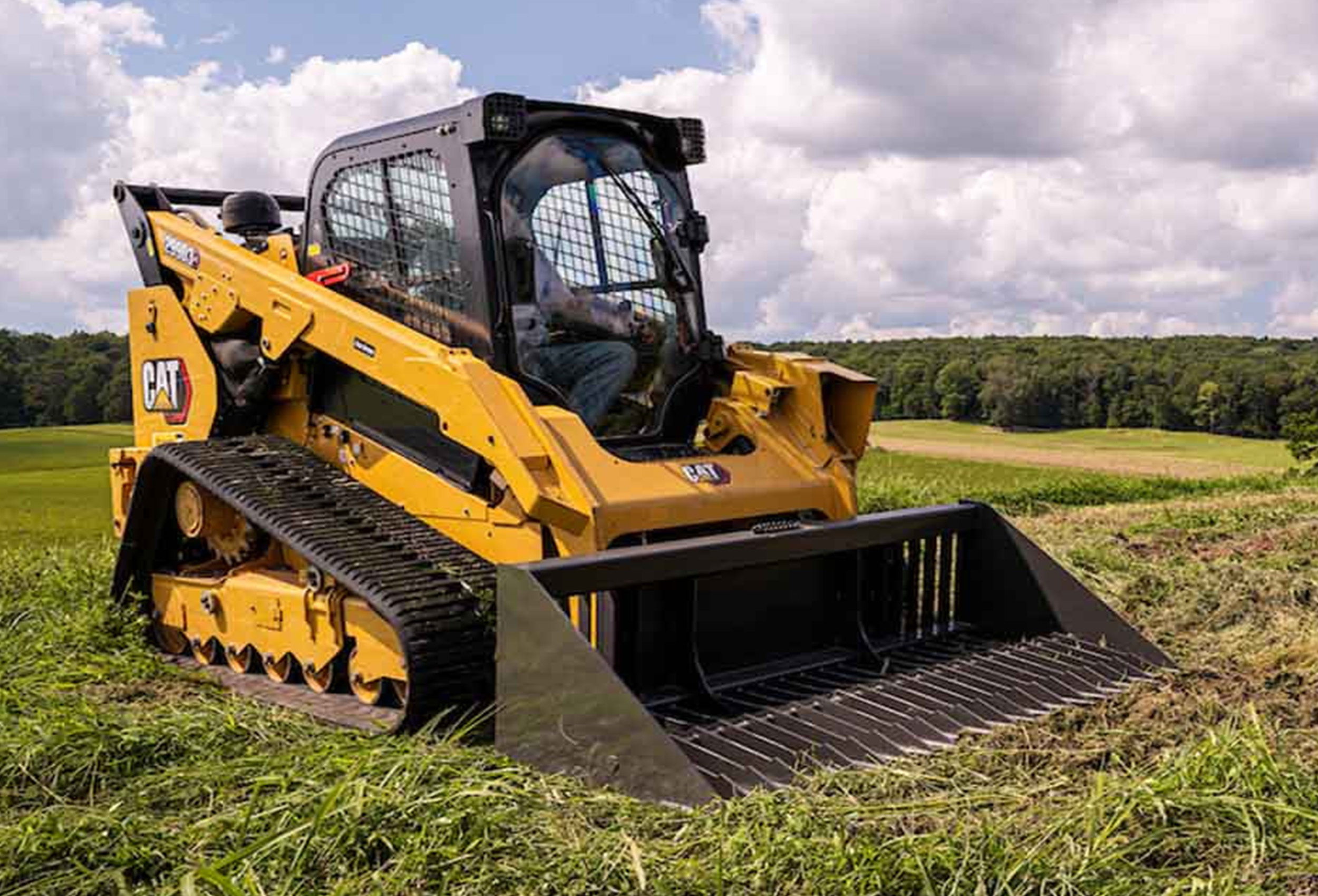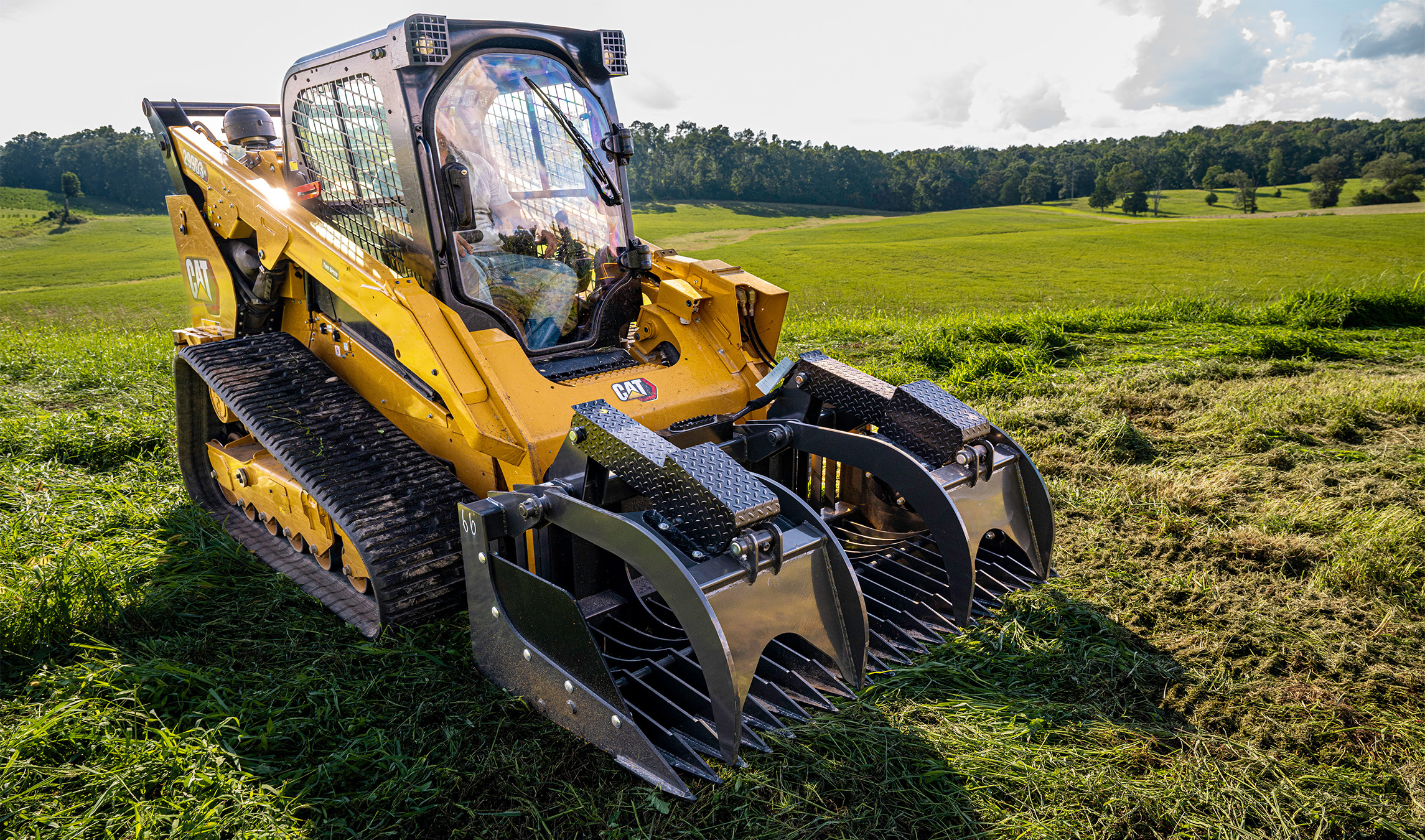5 Projects For A Skid Steer Skeleton Rock Bucket
Posted by Mackenzi Griffin on 16th May 2023
Experienced skid steer operators understand the importance of having the right attachment for a specific job. However, they also understand that having one versatile attachment that can enhance efficiency and productivity makes a huge difference. The sturdy design and sifting capabilities of a Skid Steer Rock Bucket, make it terrific for a diverse number of construction, demolition, landscaping, and even snow removal projects.
Using a rock bucket to cover many of your needs can cut time out of your operations by eliminating the need for swapping out attachments as well as save you extra unnecessary costs. In this guide, we will explore five projects where the skid steer skeleton rock bucket can be your go-to attachment, along with some techniques for optimal efficiency.

Site Clearing
When clearing a construction site the skid steer skeleton rock bucket can be invaluable. Rock buckets are designed to carry heavy loads and the spaced tines make them a bit lighter and more easily maneuverable.
Here is how to clear large debris from a construction site:
Identify any large rocks, debris, or vegetation that needs to be removed before beginning your clearing process. Plan out your route before you start to save yourself time.
Position the skid steer at the end of the area, giving you plenty of space to maneuver.
Lower the skid steer's arms until the skeleton rock bucket touches the ground. Slowly drive the skid steer forward, engaging the bucket teeth into the soil or debris. Gradually lift and tilt the bucket, sifting and separating rocks and debris from the soil. With this method you can quickly scoop up larger debris and leave any dust behind to mix in with soil when you grade the land.
Grading and Leveling
If you do not need soil to be perfectly compacted and flat, you can use a skeleton bucket to grade. The bottom of the bucket can contour the land enough for most construction jobs and landscaping however, it would not be able to meet the leveling requirements for a roadway.
To do a quick grading job with your rock bucket try this:
Determine the desired grade and slope for the project, ensuring it complies with any architectural plans or engineering specifications.
Position the skid steer at the starting point, that will provide you with the most efficiency. Lower the bucket until it lightly touches the ground.
Drive the skid steer slowly, dragging the skeleton rock bucket across the surface. The bucket's teeth will help to break up any uneven terrain and create a smooth, level surface.
Repeat the process until the desired grade is achieved. Periodically check the grade and make sure it meets your standards. It may take a few more passes than a standard grading bucket but, it will get the job done.
Landscaping and Rock Placement
When working on landscaping projects, you can use the rock bucket for what is made for. You can clear land of unwanted messes and place landscaping features like...rocks.
Start by placing and positioning your rocks within easy reach of the skid steer.
If your rock bucket has a grapple, engage the bucket's jaw firmly around the rock, to get a secure grip.
Lift the rock and carefully maneuver it to the desired location, if your bucket does not have a grapple try to shorten the distance as much as possible and choose rocks that fit inside the bucket if you can.
A rock bucket on a landscaping job can check off a lot items on the to-do list. Cleanup, design feature placements and even a little tilling.

Soil Tilling
A rock bucket is an excellent choice for tilling smaller areas of land like a large garden bed, small crop plots or areas for spreading grass seed.
After you determine the depth of tillage required based on the crop's root depth and the soil's compaction level, identify any obstacles such as large rocks, tree stumps, or debris that may impede tilling. Remove or relocate them, as necessary.
Position the skeleton rock bucket slightly above the soil surface, ensuring the tines penetrate the soil to the desired depth. Lower the bucket into the soil, and tilt and angle, the tines should penetrate the soil while the bucket remains level or slightly angled.
Turn the skid steer around using a wide turning radius to prevent excessive soil compaction. Repeat the tilling process and overlap each pass slightly for thorough coverage of the entire area.
Adjust the bucket's tilt angle and lift height as needed to for consistent and optimal tilling results.
Monitor the tilling depth by keeping an eye on the soil being lifted and mixed by the tines. Adjust the skid steer's speed and tine depth accordingly to achieve the desired tilth.
Just listen to your skid steer and be gentle, if you move too fast or apply too much pressure to the earth you will cause damage to your machine.
Snow Plowing
In the dead of winter when the ice is thick on the road and the snow is hard and compact, a rock bucket is almost better than a plow. The points of the tines are strong enough to shatter through resilient snow and ice buildup so you can clear roadways and driveways to make them safer.
Lower the bucket to the ground and position the bucket at an angle to that will push the snow effectively, usually starting with a slight angle towards the wind.
Tilt the bucket forward just enough to help the teeth penetrate and break up compacted snow.
Engage the hydraulic controls to lift the bucket slightly, so that the tines do not dig too deeply into the pavement.
Maintain a consistent enough speed to effectively plow, typically between 3-5 miles per hour but, keep an eye on your bucket level and make sure to readjust as needed so that you don’t scrape the concrete more than you need to.
Use overlapping passes to ensure complete snow removal. Aim for a slight overlap (10-20%) between each pass.
If the snow is deep or heavy, make multiple lighter passes rather than attempting to clear it in a single pass. Be cautious near curbs or other obstacles to avoid damaging the bucket or causing undue stress on the skid steer.
So, if you are looking for an attachment that you can use for everything you do then a rock bucket is the answer.





